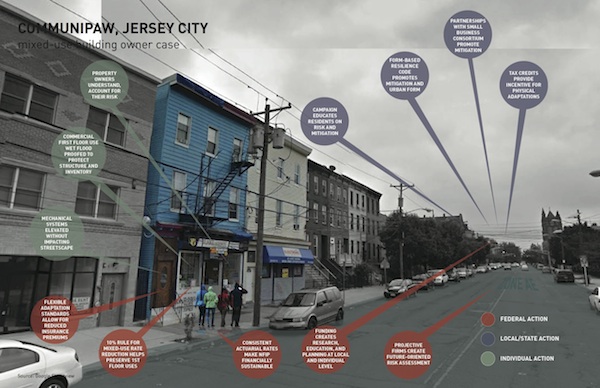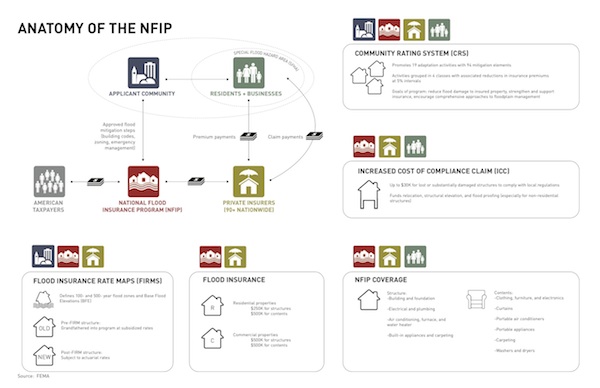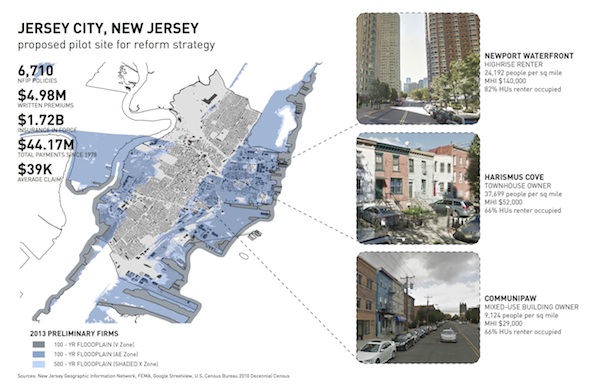Insuring Resilient Urbanism: Adapting the National Flood Insurance Program to meet long-term needs in urban environments

by Trevor Johnson (MUP ’14) and Alison Tramba (MUP ’14)
The National Flood Insurance Program (NFIP) has sparked considerable debate in Hurricane Sandy’s wake. Introduced in 1968 as an alternative to repeated government bailouts in flood-prone areas, NFIP is designed to financially protect residents and small-business owners whose properties are at risk of damage in the case of catastrophic events. Sizeable government subsidization of risk has incited political controversy, which highlights practical challenges that the program faces: First, NFIP is not currently financially sustainable. Second, its standards are not suited to dense urban environments where flooding often occurs. Finally, NFIP’s structure enables people to live in flood-prone areas without a full understanding of related risks.
Recommendations for improving NFIP stem from an objective to ultimately return flood insurance to the private market, but with a robust structure that empowers municipalities and individuals to manage risks. Proposed policies and actions respond to NFIP’s three main challenges and serve to make the program financially viable, increase the relevance of its design requirements to urban environments, and mitigate long-term risks in flood-prone communities. The federal government, municipalities/states, and individuals must all play roles in the process. For example, the plan for NFIP to adopt actuarial rates for all properties must be linked to assistance programs, such as tax credits and educational campaigns, that support residents who otherwise cannot afford or are ill-equipped to make adaptive change to their properties.
The set of proposals identified has been explored in three different Jersey City neighborhoods to understand the relative impacts of proposed actions on varying typologies and income groups. This case study offers an example of how revisions to NFIP may impact similar urban coastal environments in the mid- to long term. Find the complete project here.
Collaboration with HUD and The Rockefeller Foundation

